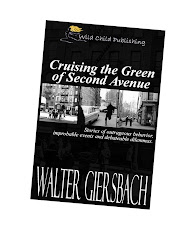Historical novels are an enchanting genre that leads readers into the dark corridors of the past. We walk unseen next to characters — some we’ve heard of and some fictional — who are explorers and adventurers, romantic lovers and nefarious brigands. Politicians are exposed, the self-righteous are quashed, and the meek inherit the earth before everyone goes home for the day.
As much as I enjoy sitting down with a new historical novel (or an old one by William Safire or Gore Vidal), I find one hand on the book and my other hand crossing fingers in skepticism. This doubt, which has led to cynicism, began with Killing Lincoln, written by Fox TV anchor and conservative pundit Bill O’Reilly and wordsmith Martin Dugard. (O’Reilly and Dugard published the formulaic Killing Kennedy soon afterwards. They’ve now given the “portable history treatment” to Jesus.)
They unroll the drama leading up to John Wilkes Booth’s infamous act while unveiling a band of amateur conspirators. In fact, history classes tend to skip over the widespread rabid hatred of Lincoln and the motley group that conspired to murder the President. Perhaps it’s good to be reminded of such things.
But how true is their fictionalized treatment? A seven-page index offers no sources, nor does the prologue, but the authors fill the work with interior thoughts and imaginary conversations the way an éclair is puffed up with cream filling: light and airy, but not nutritionally good.
This is a non-fiction adventure set against a historical backdrop. Dare we imagine the gaunt President walking alone through the cheering throngs, heedless to the warnings that he might be assassinated? Do we gasp seeing General Grant show up at the Appomattox peace table with muddy boots to remind the impeccably dressed General Lee how Grant was upbraided for sloppiness during the Mexican War? Do we titter to hear the conversation between Lincoln and his wife in the closed carriage en route to Ford’s Theatre?
Readers should gasp at having paid for populist literary drama, in which the past and the present exist contemporaneous with each other. It’s branded as “history” that really isn’t history, drawing-room drama that could be played out today in a soap opera or on a cable channel.
Theirs is less a “bad” book than thin gruel after wading through work by Drew Gilpin Faust and Bruce Catton. We’ve embraced the narrative tricks of snappy writing, short sections and quick cutting worthy of “breaking news” on CNN. What the readers have lost is a certain Truth.
Artist and writer Douglas Coupland calls this new literary genre Translit: “Translit novels cross history without being historical; they span geography without changing psychic place.” The contemporary reader is tossed into the past without having to leave the present. It’s almost as if, Coupland says, one “can travel back to Victorian England — only with vaccinations, a wad of cash and a clean set of ruling-class garb.”
William Safire tackled an extremely difficult subject in Scandalmonger, an account of charges against Alexander Hamilton brought by Thomas Jefferson published in 2000. Safire was kind enough to write in the foreword, “The reader of historical fiction wonders: ‘What’s true and what’s not?’ As docudramas blur the line between fact and fiction, the reader is entitled to know what is history and what is twister.” Much appreciated, Mr. Safire. All your characters were real people, the dialogue was based on contemporary letters, diaries, news accounts, and court transcripts. And thank you for an extensive bibliography and indexed epilogue.
Andrew Miller’s Pure ventures into pre-revolutionary France. The book has been hailed for its narrative style and freedom from pastiche. But still, there was the question by The New York Times Book Reviewer that “Some stories are too wonderful — too filled with wonders — to be set in the present. They can’t really be called historical fiction because they don’t serve history so much as plunder it to invent what might have been.”
Readers should plead with writers to tell as much of the “truth” as they can. James Wood wrote in The New Yorker (May 21, 2012), reviewing HHhH by Laurent Binet, that “invented facts — invented characters, for that matter — have no place in historical fiction, and weaken it both aesthetically and morally.” Binet himself writes, “Inventing a character in order to understand historical facts is like fabricating evidence.” This, Wood stated, would abolish most historical fiction. Yet, Binet has managed to write a historical novel not quite full of invented details that certainly uses invention. His fidelity to the historical record, and obsessive urge to analyze those moments where guesswork and invention replace fact, makes HHhH as much about the technical and moral processes of writing a historical novel as it is a historical novel.
At the end, this is what concerns me. There is a speculative fiction genre called “alternative history.” This, I suspect, is what we are often given in lieu of the real thing.
Sunday, September 29, 2013
Subscribe to:
Post Comments (Atom)


No comments:
Post a Comment